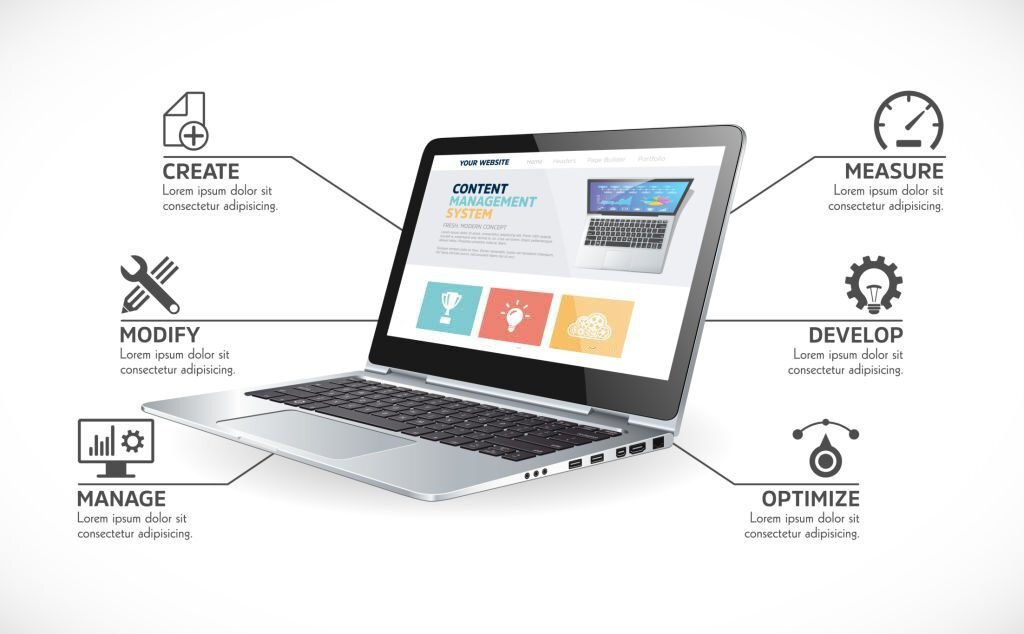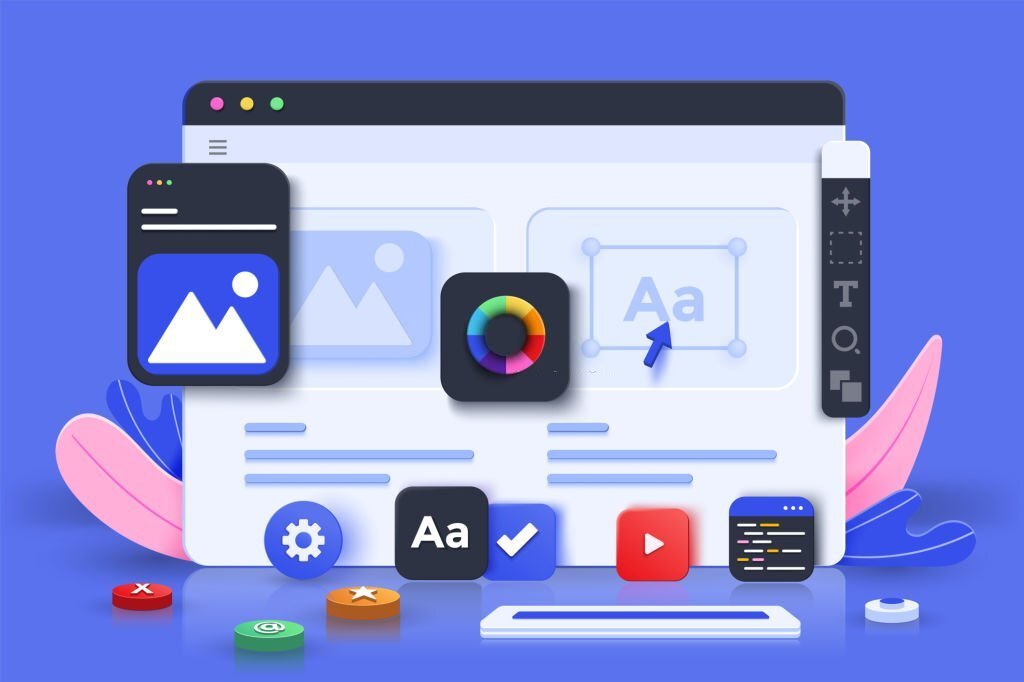- Amelia
- 0 Comments
- 1041 Views
Some people believe that designing a website is as easy as picking out colors, fonts, and a layout, but in reality, there is much more to it than that. A website is now essential for each company, rather than a nice-to-have.
Yet, having a website isn’t enough to draw in and keep your ideal customers. A well-thought-out website strategy that supports your business goals and satisfies your clients is essential in today’s competitive internet market. Building a website requires careful preparation and execution, which is why your website strategy is crucial. While it is possible to launch a website without first developing website strategies, doing so may limit your ability to attract visitors and accomplish other objectives.
Developing a plan for your website may appear simple at first, but the results will reflect how much work you put into it. Building and launching your website will go more smoothly if you spend more time on planning and preparation. Determining who you want to visit your site, and what you want them to do once they get there, developing a coherent brand identity, and optimizing your content for search engines through keyword research and search engine optimization (SEO) is all part of developing a website strategy.
To help you create a winning website strategy plan for your website, we’ll go through the essential elements of a strategy and provide you with some pointers and examples.
What Exactly Is The Definition Of A Website Strategy?
Simply put, a website strategy is a long-term business plan centered on your website. Beyond only the visual aesthetic, your website strategy should also guide the type of content you provide and any promotional activities you undertake.
Website strategy often entails a number of components, such as design, branding, keywords, and analytics. When put together, these components facilitate goal-aligned optimization of your website during its design and development phases. Your website strategy can also aid in developing your brand’s voice, visual identity, and overall mission.
What Makes A Website Strategy Essential
There are hardly any websites that were created without some sort of planning. Without giving any consideration to the site’s layout or the ultimate objective would be a huge mistake. Yet, the strategy frequently lacks focus and discipline.
Members of the stakeholder group chat casually about the website’s content, navigation, and messaging. After settling on a strategy, they begin working on the visual design.
These are strategic conversations, but they never lead to an actionable plan. Without a web strategic plan, it’s hard to know where you stand or what you want to achieve. Most websites have a vague idea of their purpose but no clear strategy for getting there.

What’s In A Website Strategy
A customer’s first impression of your company will likely be based on the quality of your website, which serves as your digital storefront. To make sure your website helps you meet your business goals, it’s important to have a plan in place.
Attracting new consumers, building trust, and eventually increasing sales can all result from a well-designed website. Yet, there is more to web design than making a site look good. You’ll need a well-thought-out website approach as well. A good website requires careful planning, which we’ll cover in this blog.
-
Define Your Business Goals
Step one in making a website strategic planning is figuring out what your business goals are.
- If someone visits your website, what do you expect they will do while they are there?
- Do you want to get more leads, make more sales, or spread the word about your brand?
Your website strategy will be based on what your business goals are.
-
Identify Your Target Audience
The people who are most likely to use your products or services are the ones you want to reach with your website. To make a website that speaks to your audience’s needs and interests, you need to know who your audience is. Market research can help you figure out who your target audience is and make a website that speaks to them.
-
Consider Your Competition
It’s important to know who your competitors are and how they are positioned in the market. By doing a competitive analysis, you can figure out your strengths and weaknesses and create a website that sets you apart from your competitors.
-
Develop A Website Strategy Plan
Having a clear web strategic planning is very important. Your plan for your website should include your
- Goals
- Target audiences
- Messaging
- Branding
You should also think about who your competitors are and how you can stand out from them. AFX web designing provider will follow the plan you make for your website by analyzing your competitors.

-
Develop Your Branding Strategy
When people go to your website, the first thing they will notice is how it looks. Strategic website design means making your website with the goals of your business in mind. When designing a strategy for a website, you should think about the user journey, the message, and Conversion Rate Optimization (CRO). A well-designed website will not only look great, but it will also help you reach your business goals and get more customers.
So, it’s important to have website design strategies that fit with your brand and gets people interested. Your logo, color scheme, fonts, and images should all be part of your brand. Your branding should also tell people what makes you different from your competitors and what makes you special. You should also think about the website’s layout, navigation, and user experience to make sure it is easy to use and looks good.
The user experience (UX) and user interface design (UI) of your website can have a big effect on how people use it. A well-designed UX/UI can make it easy and quick for users to find what they need. It can also help increase conversions and lower bounce rates.
-
Develop A Web Development Strategy
How you build your website will depend on how you plan your website development strategy. It should include decisions about the platform, where it will be hosted, and who will build it. You should also think about things like
- Scalability
- Security
- Functionality
A well-built web development strategy will help you give your users a great experience and help you reach the cost of small business website goals.
Your website should be built and hosted in a safe and reliable way. Your website should be built on a platform that can grow with your needs and is easy to keep up with. Your hosting should be quick and reliable so that your website always works and loads quickly.

-
Establish A Marketing Website Strategy
Your website is a strong marketing tool that can help you get new customers and keep the ones you already have. Your website marketing plan should include
- Search Engine Optimization (SEO)
- Content marketing
- Social media
- Email marketing
This marketing website strategy will help you get more people to visit your site, get more leads, and raise awareness of your brand.
-
Develop A Content Strategy
The content on your website should be interesting, useful, and relevant to the people you want to reach. To help your website rank higher in search results, you should also optimize your content for search engines.
A content website strategy example can help you come up with a plan for making content for your website and promoting it. Get going on making and upgrading the content that will bring your website in line with your strategy.
- Plan out the pages your site will need in order to direct visitors toward your key objective.
- Provide material that reflects the interests of your target demographic.
- Every blog article and page should conclude with a call to action that moves readers further down your sales funnel.
- Find terms that might interest your target audience by conducting keyword research, and then tailor your content to those terms.
- Delete any content that isn’t contributing to your mission or sales funnel.
Think about if your site’s structure and navigation could be improved to make it simpler for visitors to locate the information they need, engage with your company, and contribute to the achievement of your organization’s objectives.
-
Design A Sales Process For Your Site
An online sales funnel is a sequence of web design trends activities to bring potential customers one step closer to becoming paying clients.
Before leaving your website, you want visitors to take some action that will benefit them on their customer journey. Either they input their email address to become a lead or they make a purchase, at which point they become a customer.
The first step in guiding a website visitor to do the desired action is to address the pages they land on. A lawn care firm that wants more customers to book online could use this type of website strategy.
It’s Time To Start Implementing Your Web Strategy

You need a strategic website design that directs your efforts and helps you meet your business goals if you want to flourish online. With the advice and case studies in this article, you can develop a website strategy that serves your purposes and efficiently communicates with your audience. A well-thought-out website strategy may help you attract visitors, engage your audience, and create business results through measures such as generating high-quality content and optimizing your site for search engines and user experience.
Then why hold off?
Create a plan for your website’s future today and increase your internet visibility. You have learned how to develop a plan for your website; the next step is to put that plan into action. Before developing a website strategy to implement on your site, take the time to establish measurable and meaningful goals.





